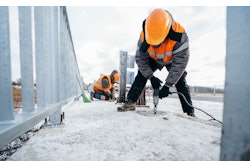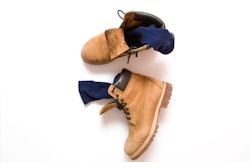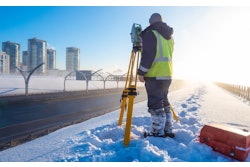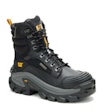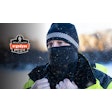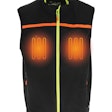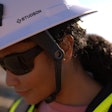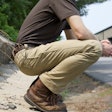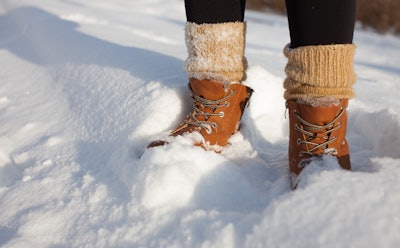
Today’s technology for construction work apparel offers head to toe warmth in everything from heated gloves – a topic addressed in a previous IRONPROS story – to heated socks.
Heated socks are a wearable technology akin to a heating pad that offers numerous benefits for the construction worker on a jobsite in cold weather: temporary improved blood circulation (poor circulation is a driving factor in feet feeling cold); reduced pain that may occur from cold feet; prevention of cold-related injuries such as frostbite and increased productivity.
Heated socks can be bulkier and should be tried on with the shoes or boots being worn on the construction site to assess fit and comfort. Lightly padded socks would be a preferable option.
How Do Heated Socks Work?
The warmth in heated socks is generated through built-in heating elements usually made of conductive material such as carbon fiber, which start to warm the feet once they are activated. Some socks feature focused heat zones such as at the toes and balls of the feet in order to enable the heat to rise throughout the footwear.
Heated sock options abound on the market, including those using a steel fiber technology that’s resistant to cuts and corrosion. Some socks use far-infrared technology to infiltrate deep into the tissue for even more warmth coverage.
Heated socks are powered by batteries or rechargeable lithium-ion batteries embedded in the socks or ankles with the run time depending on their capacity. It is advisable to pack extra batteries as backup. Some brands run on AC power, plugging into an external battery pack or an outlet. While they may offer unlimited heat, they also can limit mobility. Heated socks may come with a keychain remote, enabling the construction workers to adjust the heat as needed.
Heated socks often are designed with different heat settings, enabling those wearing them to adjust the temperature according to weather conditions and preferences. Also typically designed into the socks are insulating materials to retain heat and moisture-wicking materials to keep the feet dry.
A control system consisting of switches or buttons located on the sock or through a remote control enables the person wearing the socks to turn the heat on or off and perform desired temperature adjustments. Some brands can heat up in as little as 30 seconds.
Some more higher tech models can use Bluetooth connectivity to control the heat through an app, which also monitors battery life.
Best Materials for Heated Socks
The material from which the socks are made also contributes significantly to their ability to keep feet warm and dry. Cotton sock may be more soft, comfortable and breathable. However, they can become heavy when wet, lose insulating capabilities, retain odor-causing bacteria and be less durable than other fabrics.
Merino wool socks wick away moisture, provide breathability and significant insulation. They are considered durable and comfortable, providing additional cushioning and support. They feature antimicrobial properties to control odor. Microfiber socks – made from a microfiber fabric that is a synthetic material composed of finely-woven synthetic fibers such as polyester, nylon or a combination of both – offers comfort, moisture management, breathability, durability and temperature regulation.
They have a soft and smooth texture, are moisture-wicking, breathable, lightweight and durable. Like Merino wool, microfiber socks also have been found to provide the benefit of being hypoallergenic.
Learn More: What's the difference between cotton and merino wool socks?
Things to Consider When Using Heated Socks
As always, check with the construction site’s safety manager to ensure the use of heated socks provides the construction worker sufficient protection from any hazards.
Those with a medical condition should first check with a medical professional such as a podiatrist when considering heated socks. Follow the manufacturer’s instructions for sock maintenance to ensure longevity and optimal performance. Check the socks frequently to look for holes.
Some heated socks can be machine-washed on a gentle cycle. For those requiring hand washing, fill a basin with lukewarm water and mild detergent. Swish the socks around without wringing or twisting them. Rinse with clean water. Air dry them by laying them flat or hang them on a drying rack away from direct sunlight and heat.
For battery care, remove batteries before washing or storing the socks. Use only the charger and adapter provided by the manufacturer. Avoid overcharging the batteries. When not in use, store the batteries in a cool, dry place.
